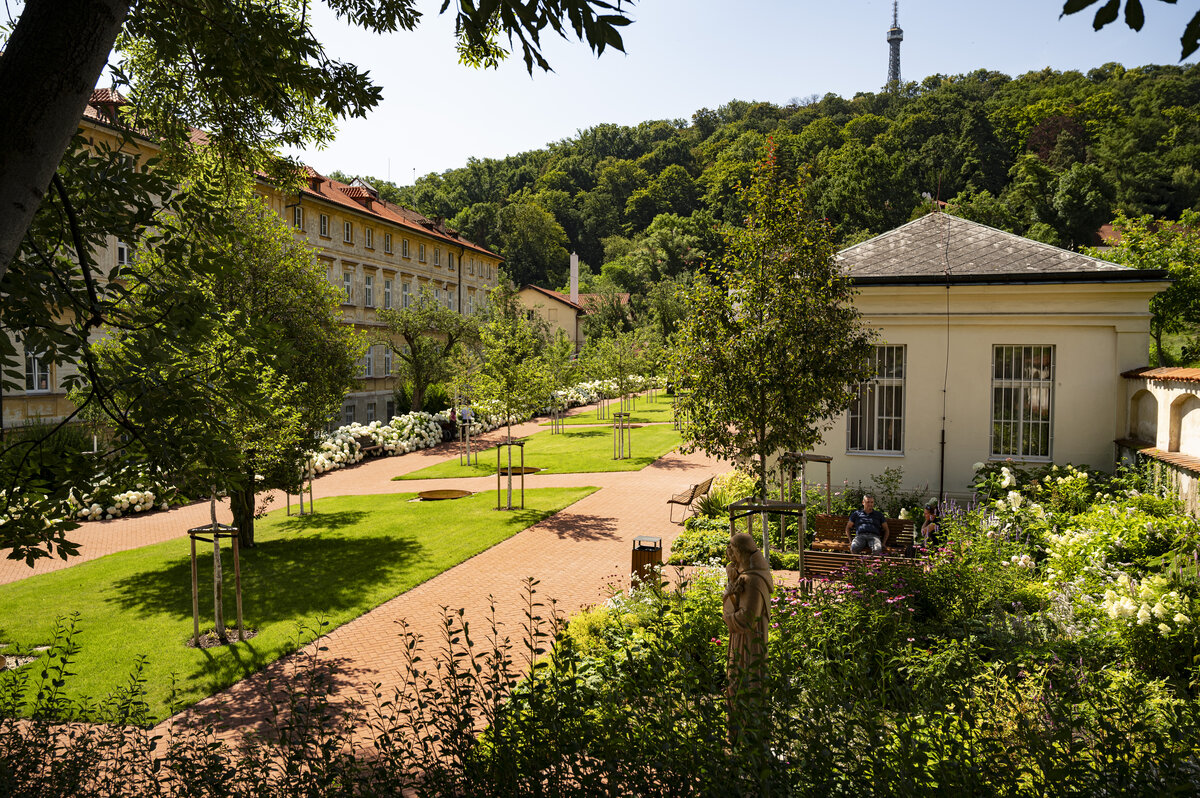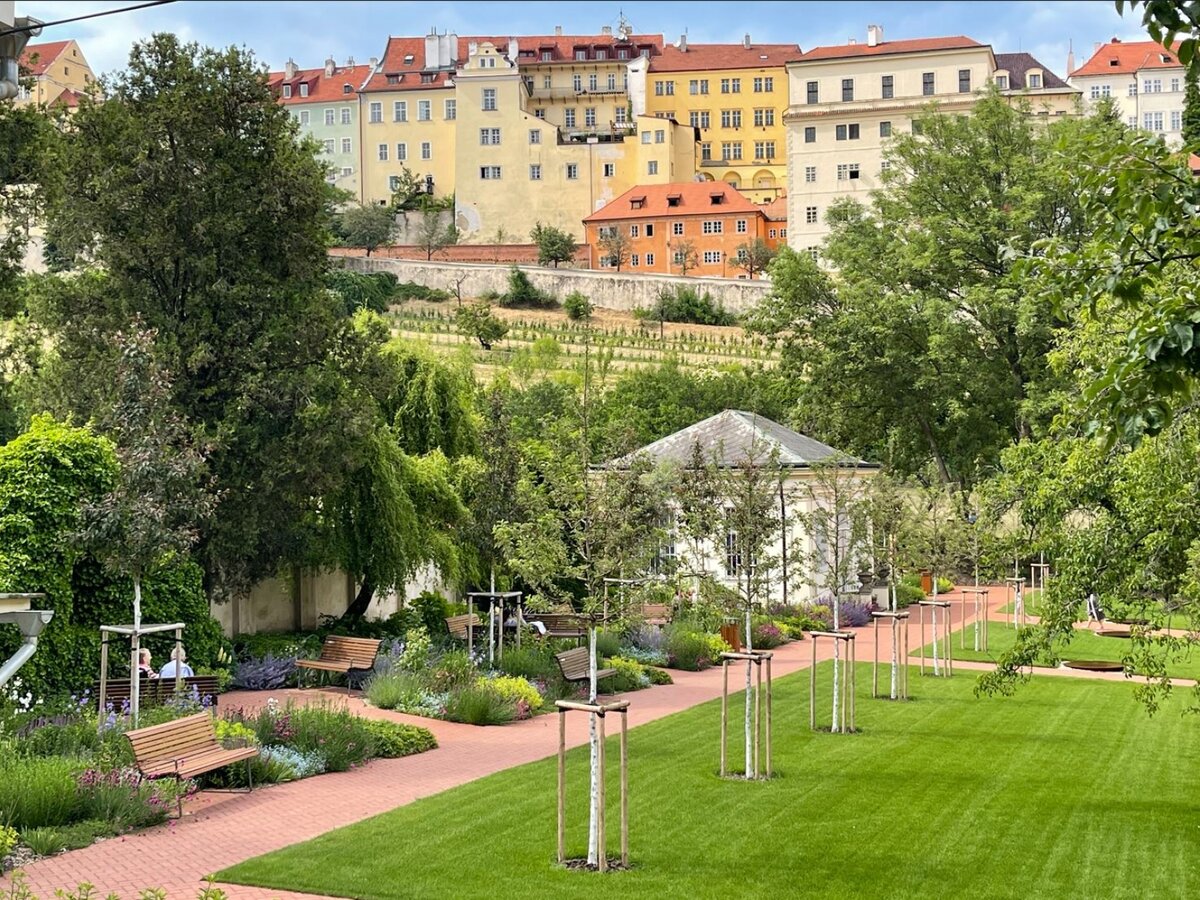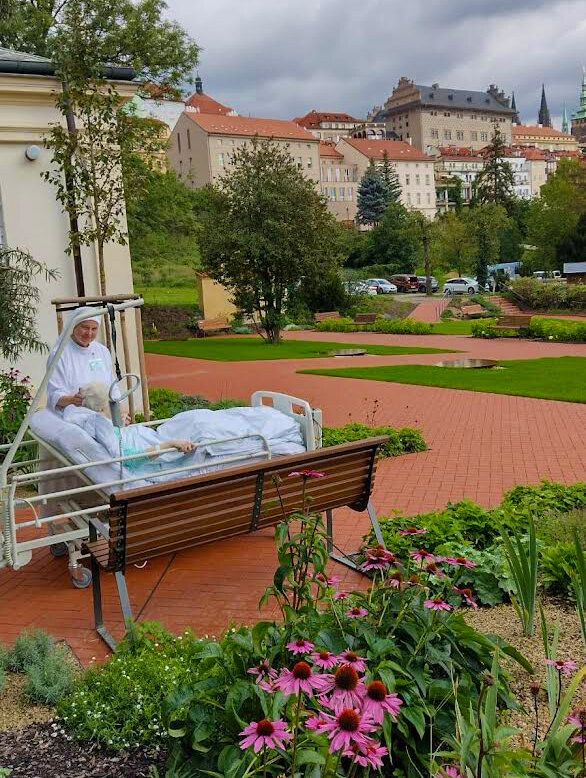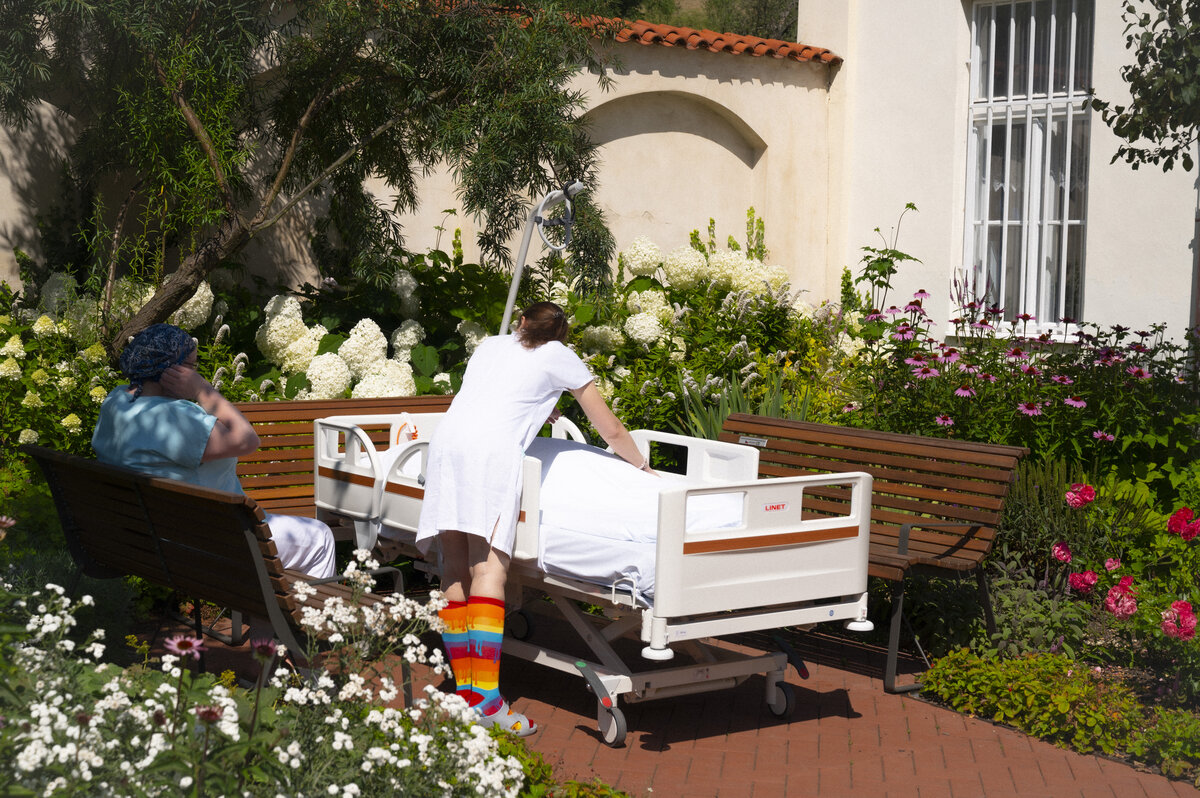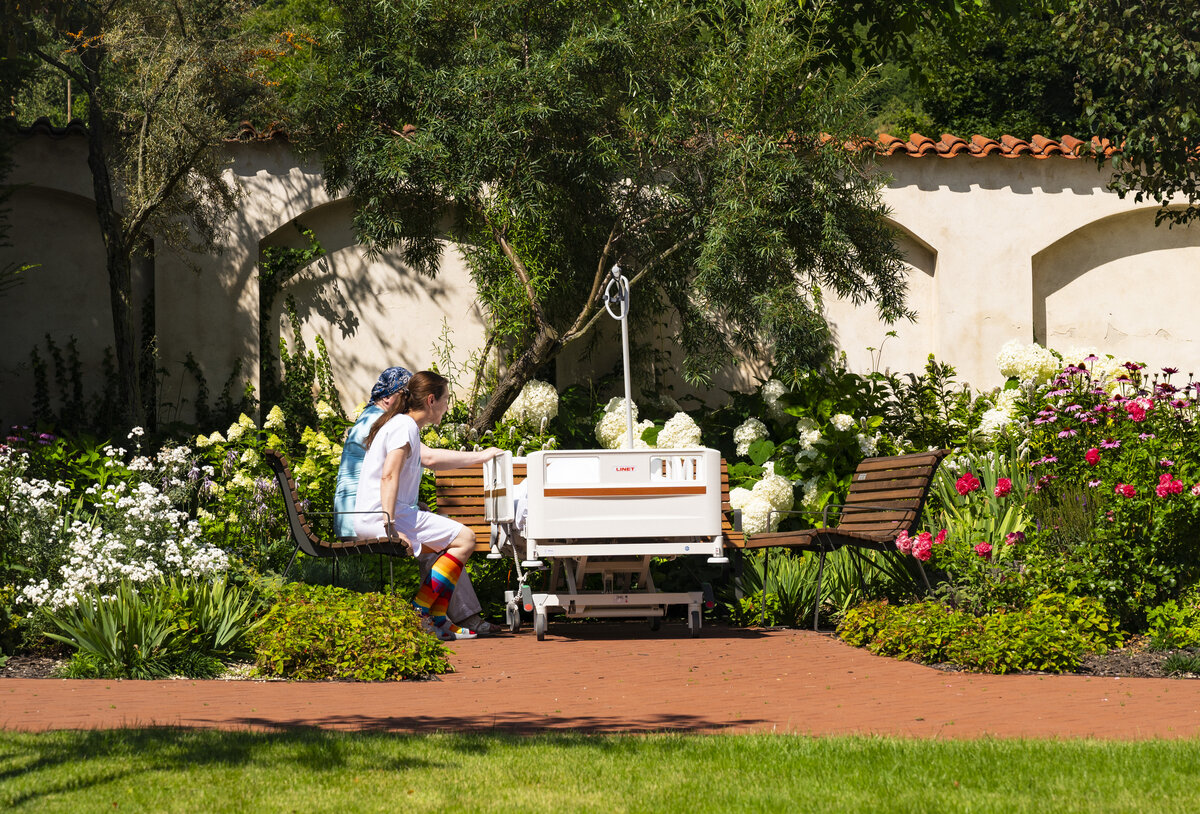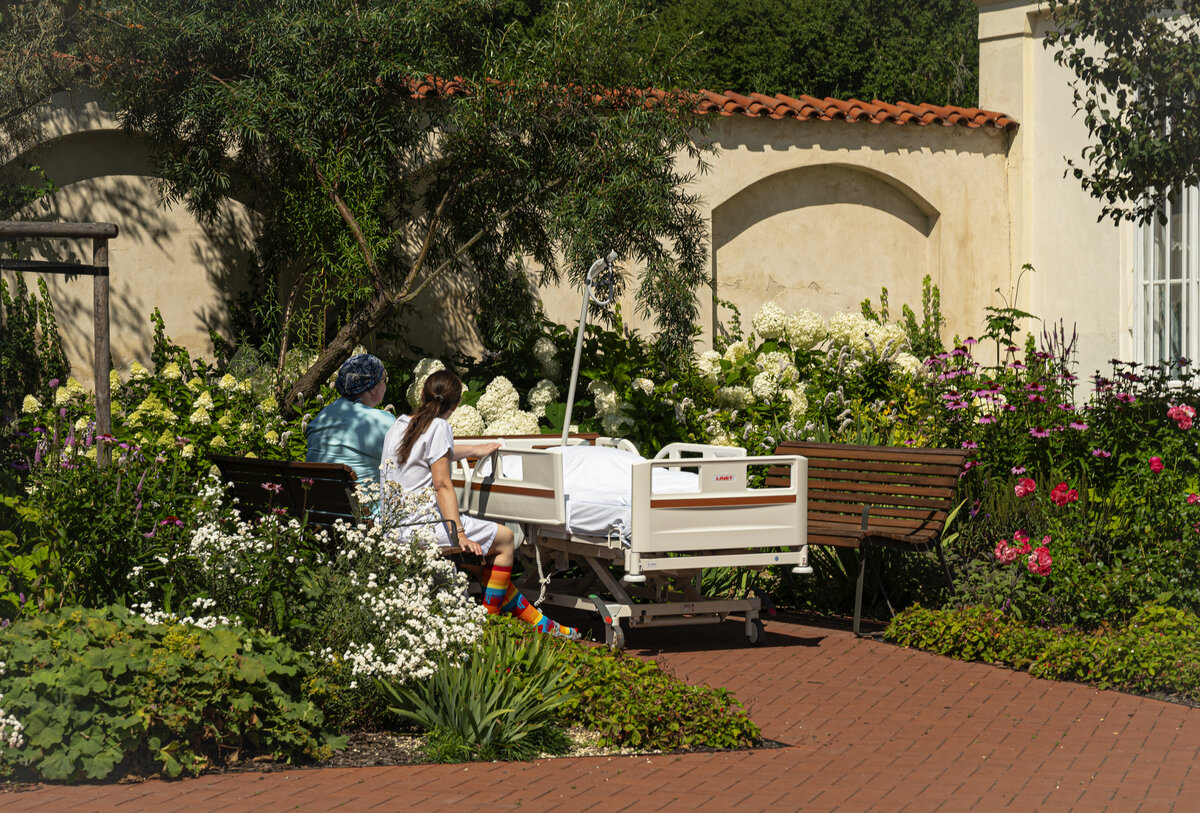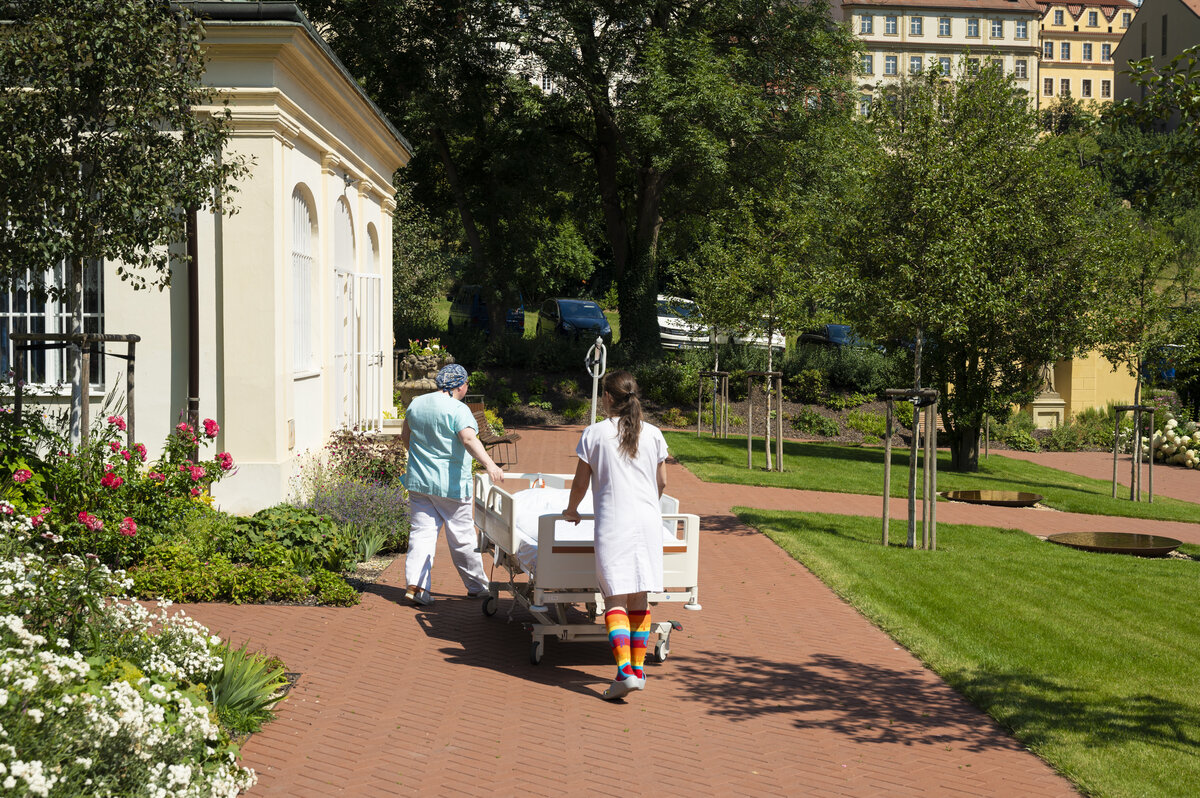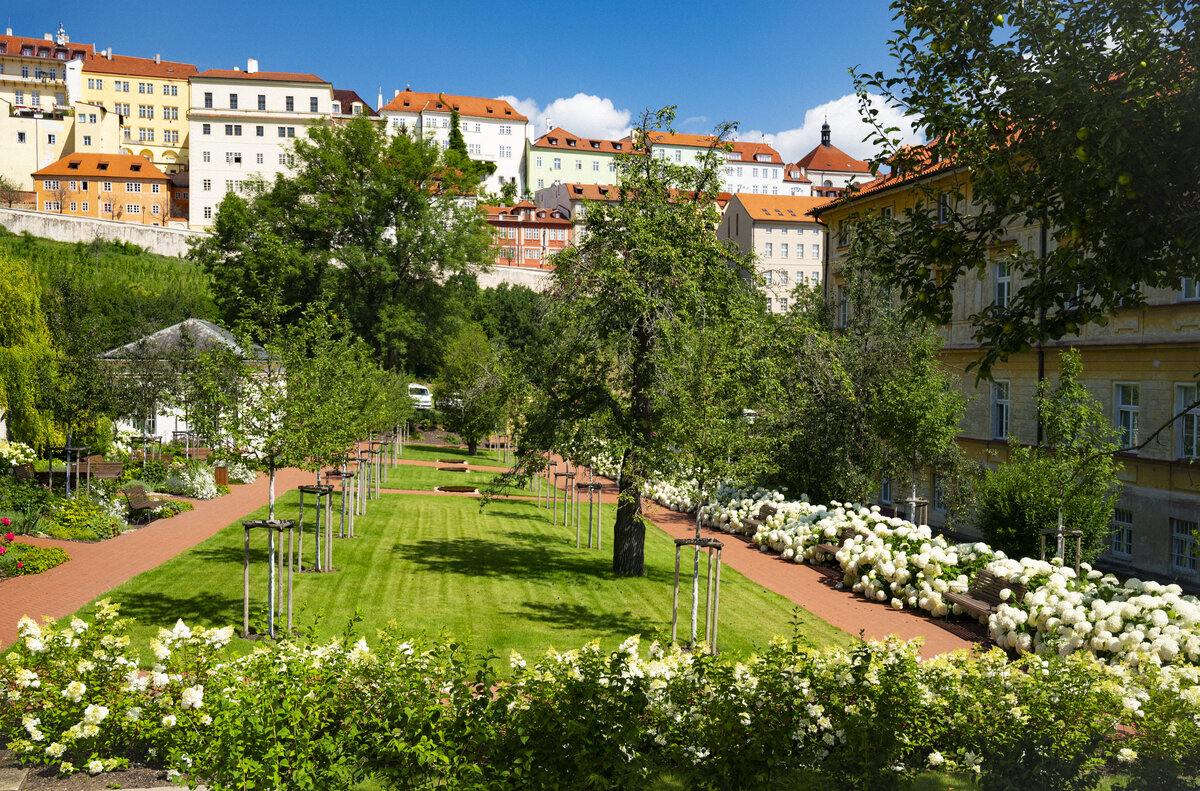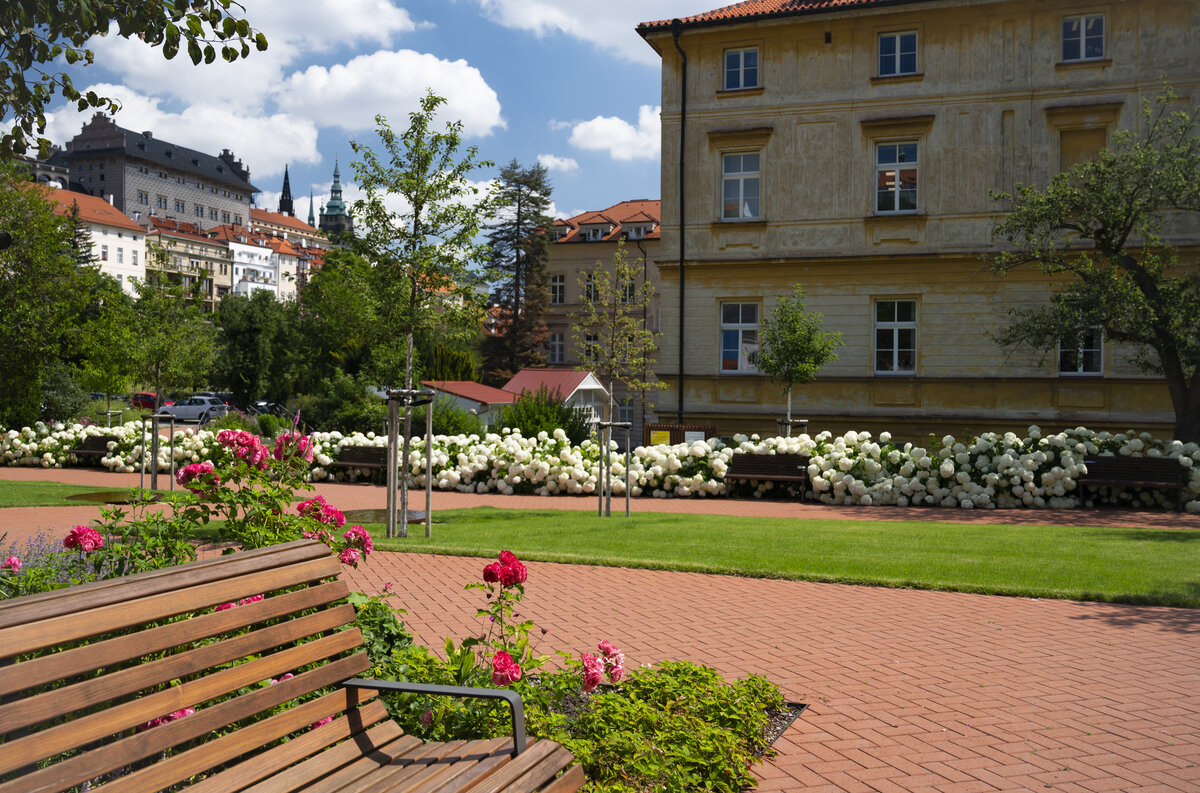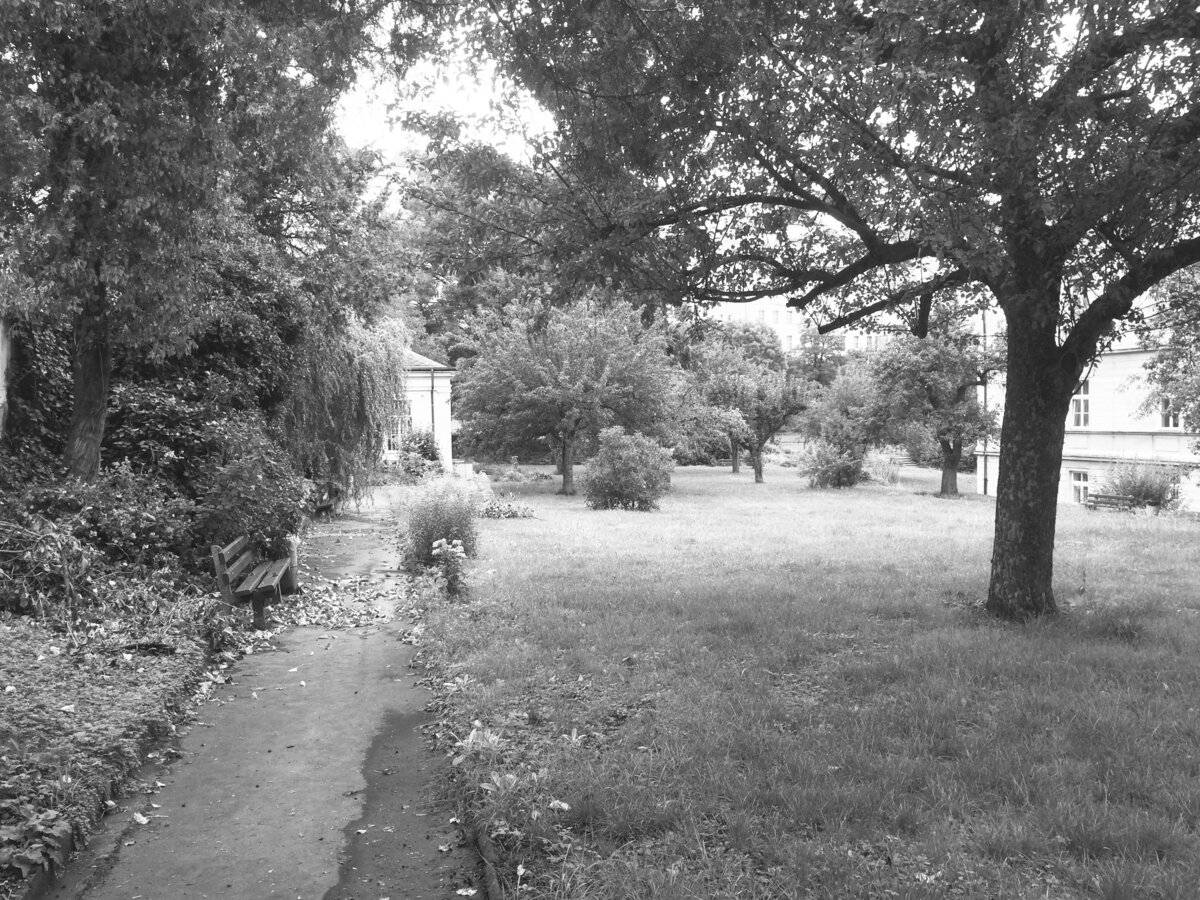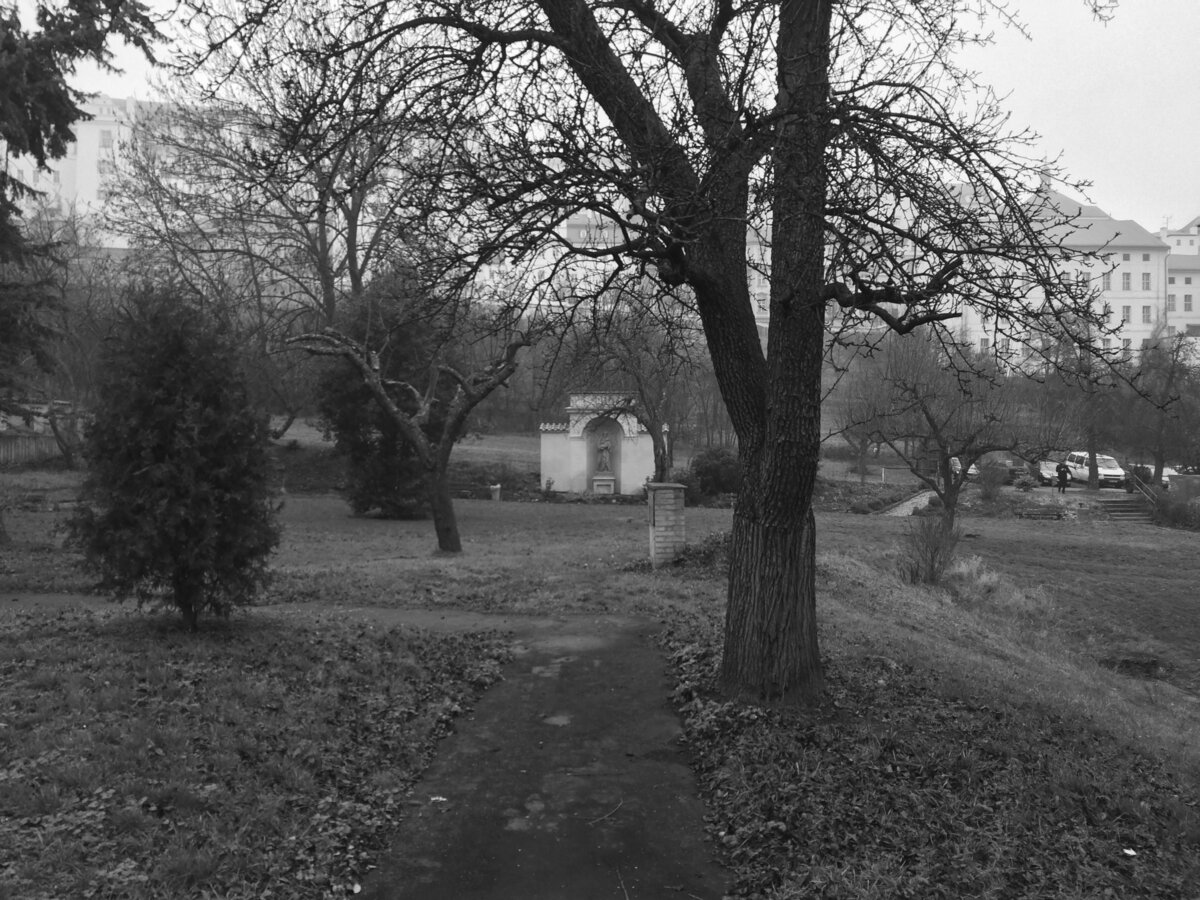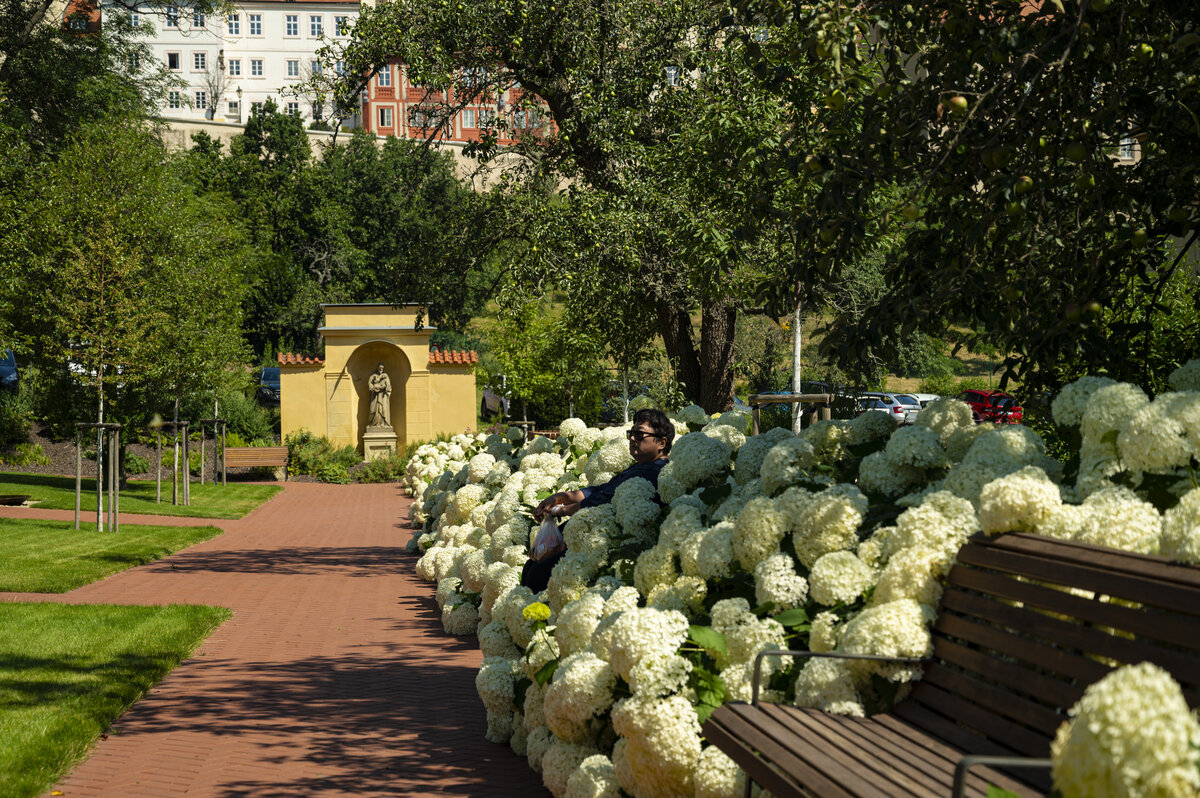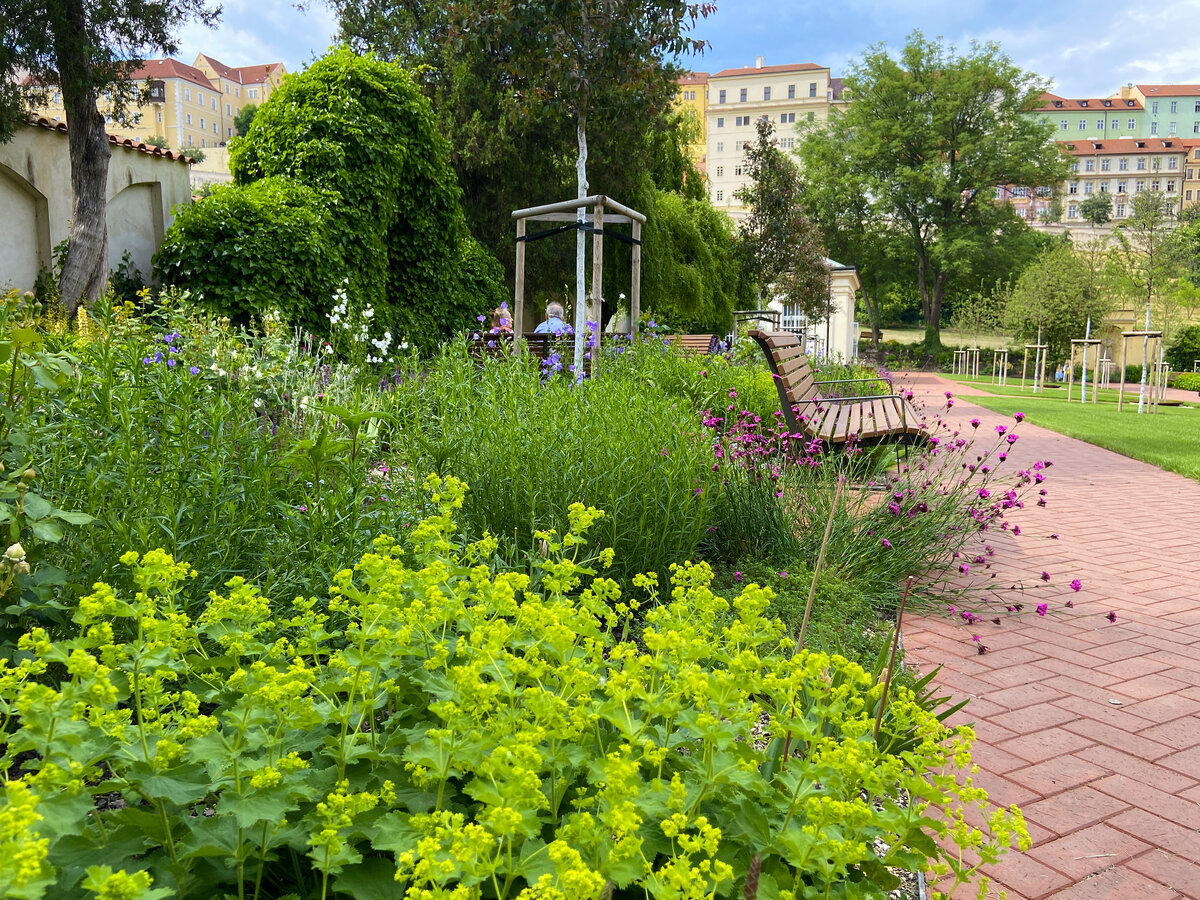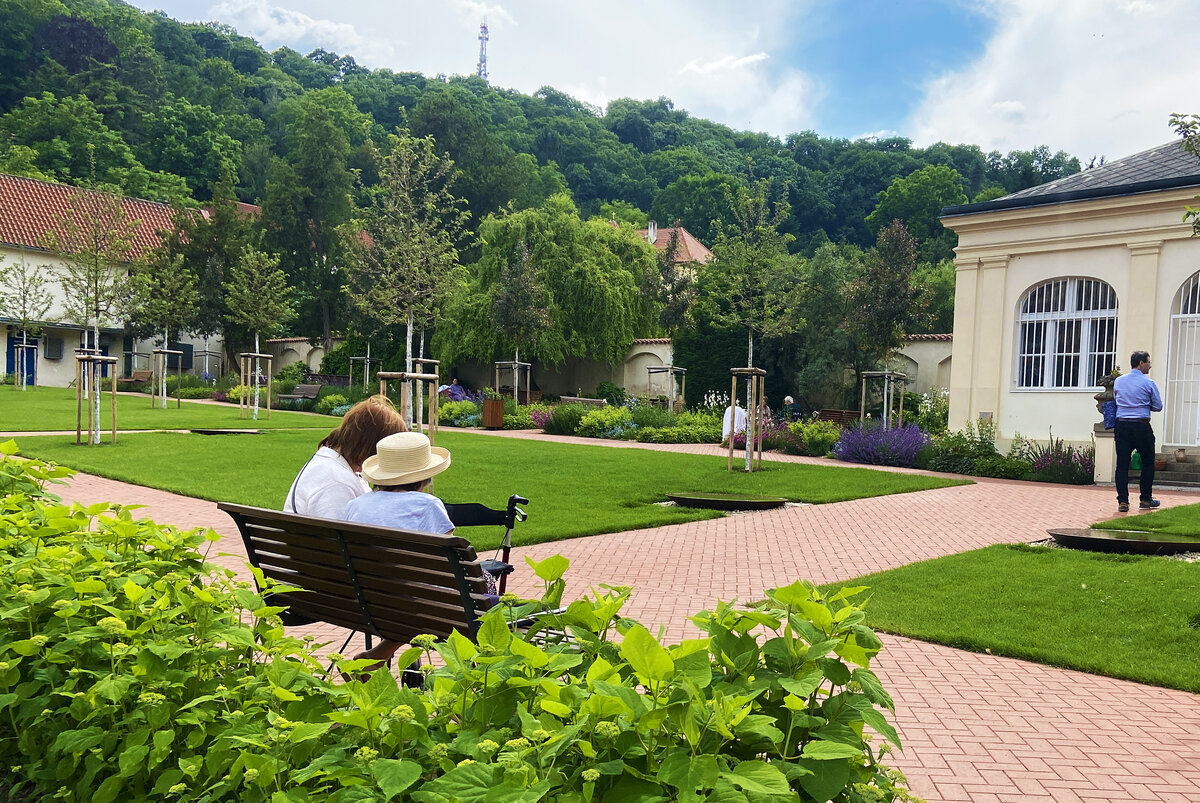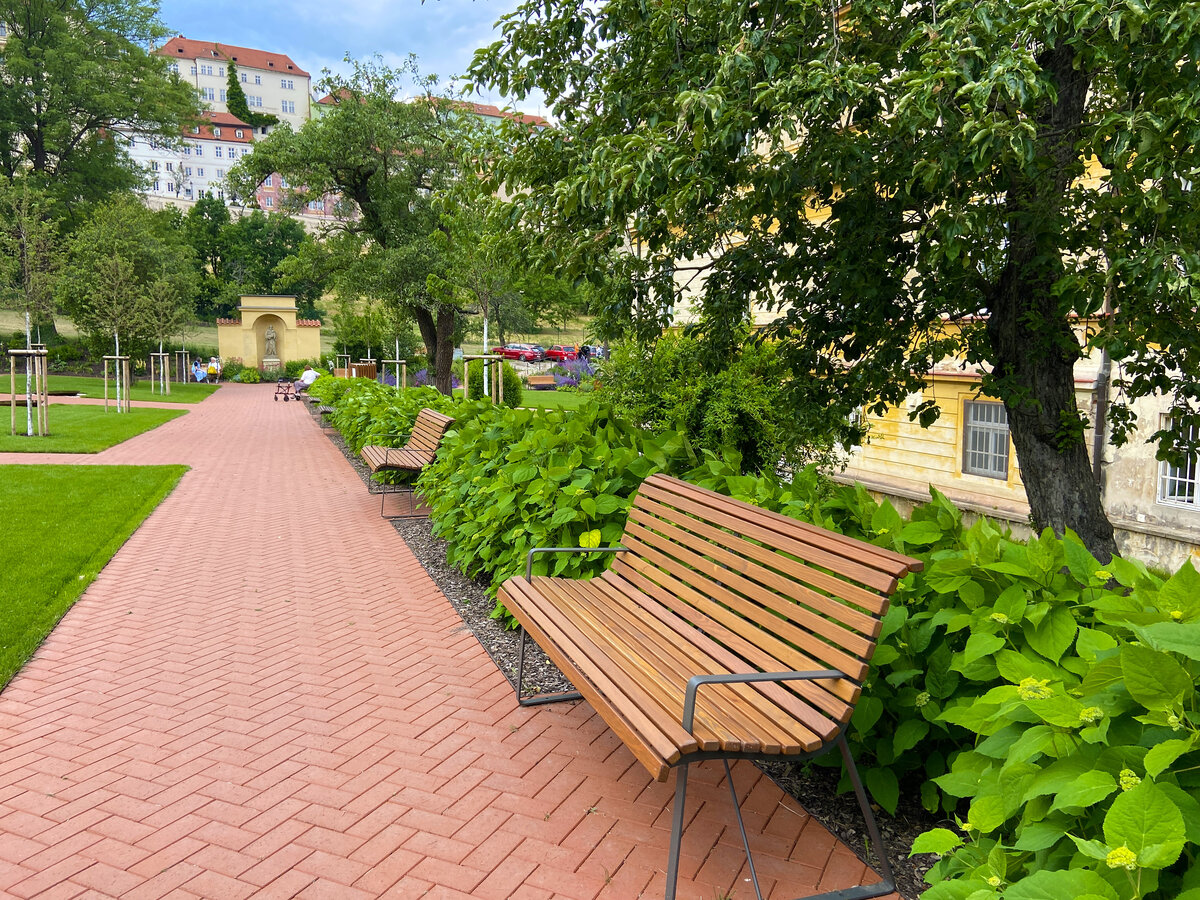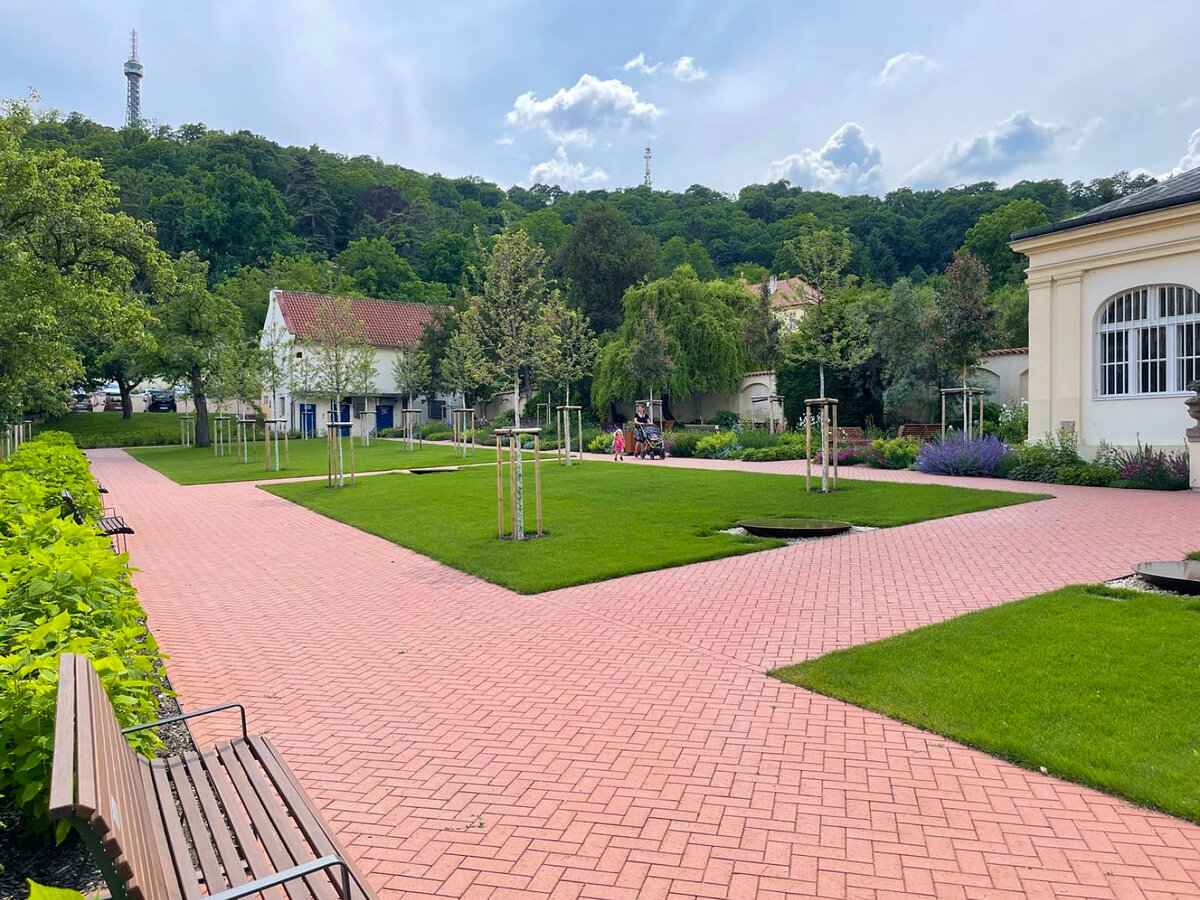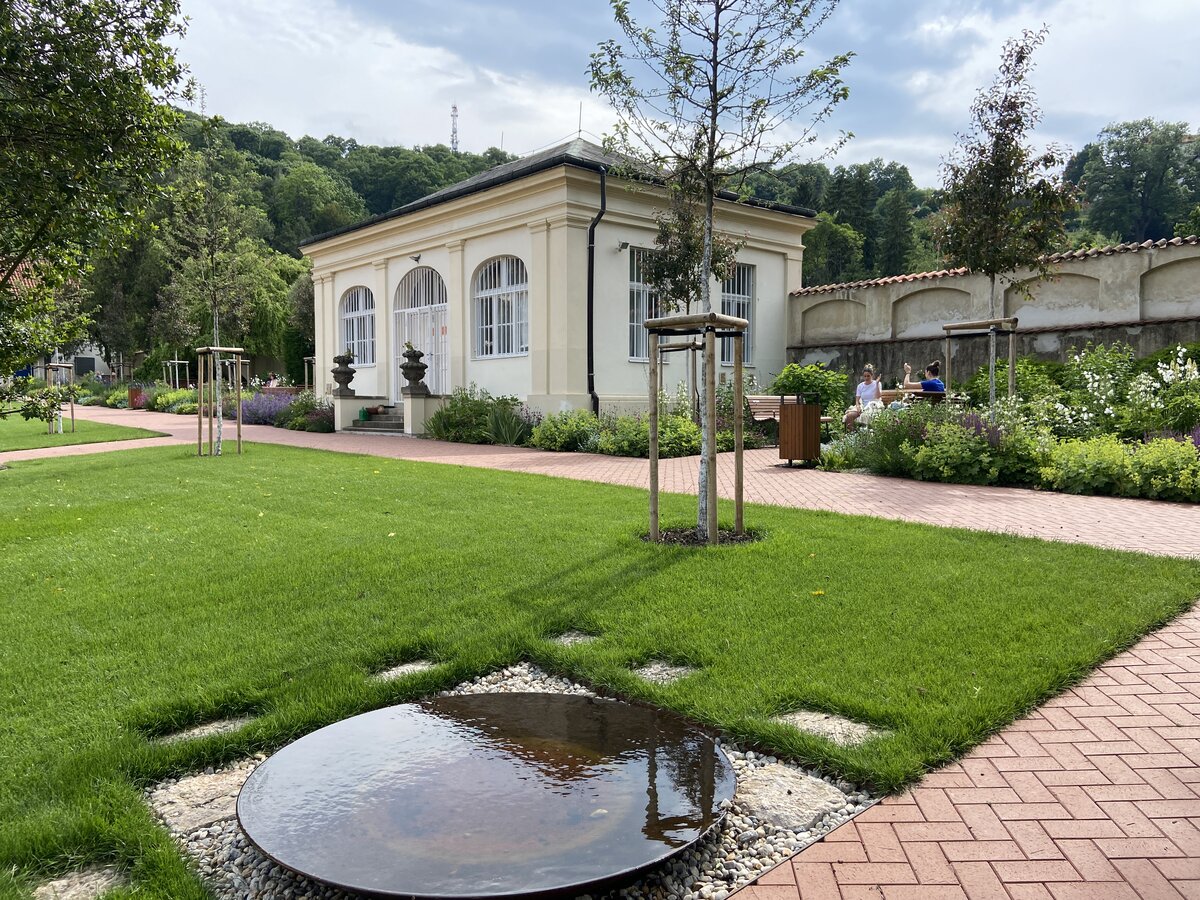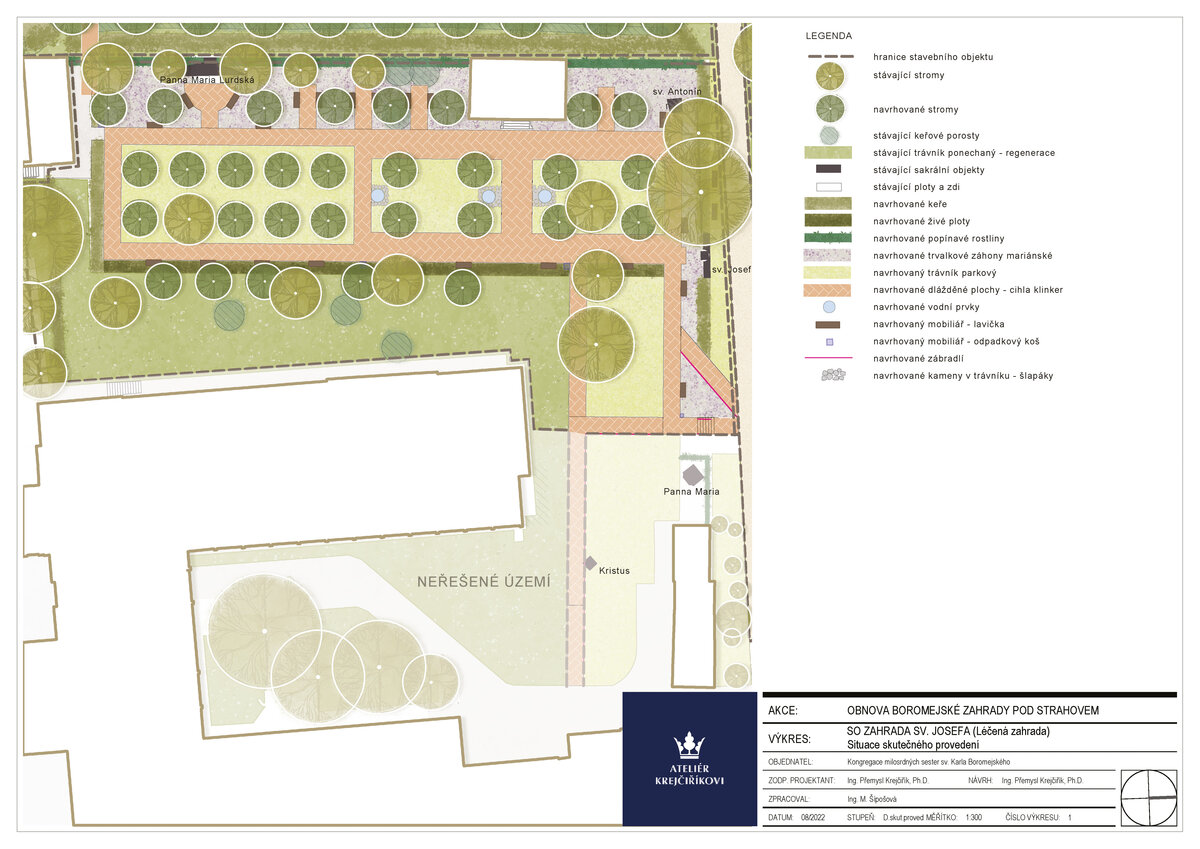| Author |
Přemysl Krejčiřík, Martina Šípošová, Kamila Krejčiříková |
| Studio |
Ateliér Krejčiříkovi |
| Location |
Nemocnice Milosrdných sester sv. Karla Boromejského v Praze |
| Collaborating professions |
Profigrass s.r.o., Ing. Tomáš Vlček, hospodaření s vodou |
| Investor |
Kongregace Milosrdných sester sv. Karla Boromejského, Šporkova 12, 118 00 Praha 1 |
| Supplier |
Aedes s.r.o., Jasan - Zdeněk Ing. Hradilák |
| Date of completion / approval of the project |
September 2023 |
| Fotograf |
Přemysl Krejčiřík |
The garden of St. Joseph is designed as a healing garden by the hospital of the Sisters of Mercy of Saint Charles Borromeo. The main mission of the garden restoration was to allow barrier -free access to the garden and create a harmonious space.
It is a place of meeting, peace and safety that offers not only to the patients a pleasant sitting with loved ones, or just quiet contemplation and relaxation. This is also adapted to the layout of the benches.
Between the flower beds are bays with benches creating privacy and intimate space.
The uniqueness of the garden is in the possibility of simply move bedridden patients from the hospital room to fresh air in the garden, where they can perceive the outside world much more intensely than behind the hospital windows. The fizz of leaves, singing of birds, the scents and colors of flowers can become everyday little joy with the significant therapeutic effects for the mind.
The flower beds, inspired by Mother Mary´s motifs, are planted with traditional symbolic plants. They have an exceptional ability to activate the senses, calm the mind, and to improve the quality of life of those who are seriously ill, bedridden, or struggle with a life obstacles. This also applies to relatives.
The barrier-free pathway network is dimensioned and materially designed to make it possible to move throughout the garden with a wheelchair and a hospital bed. Modern space design includes elements of blue -green infrastructure with maximum use of rainwater retention - irrigation is solved with water from the collection gallery system under the garden.
The proposed situation gradually developed for seven years, with the final part in cooperation with the Technical University in Dresden. Great recognition belongs to the nuns of the Sisters of Mercy of Saint Charles Borromeo, whose centuries -old experience in the treatment of long-term ill patients was a valuable source of practical information, including the requirement of ability for patients to spend time outdoors.
This stage is the first phase of a plan to build a complex of gardens that will be gradually expanded.
Green building
Environmental certification
| Type and level of certificate |
-
|
Water management
| Is rainwater used for irrigation? |
|
| Is rainwater used for other purposes, e.g. toilet flushing ? |
|
| Does the building have a green roof / facade ? |
|
| Is reclaimed waste water used, e.g. from showers and sinks ? |
|
The quality of the indoor environment
| Is clean air supply automated ? |
|
| Is comfortable temperature during summer and winter automated? |
|
| Is natural lighting guaranteed in all living areas? |
|
| Is artificial lighting automated? |
|
| Is acoustic comfort, specifically reverberation time, guaranteed? |
|
| Does the layout solution include zoning and ergonomics elements? |
|
Principles of circular economics
| Does the project use recycled materials? |
|
| Does the project use recyclable materials? |
|
| Are materials with a documented Environmental Product Declaration (EPD) promoted in the project? |
|
| Are other sustainability certifications used for materials and elements? |
|
Energy efficiency
| Energy performance class of the building according to the Energy Performance Certificate of the building |
|
| Is efficient energy management (measurement and regular analysis of consumption data) considered? |
|
| Are renewable sources of energy used, e.g. solar system, photovoltaics? |
|
Interconnection with surroundings
| Does the project enable the easy use of public transport? |
|
| Does the project support the use of alternative modes of transport, e.g cycling, walking etc. ? |
|
| Is there access to recreational natural areas, e.g. parks, in the immediate vicinity of the building? |
|
